GPUs have become a mainstay in modern virtual desktop infrastructure (VDI) implementations, and rightfully so. They greatly increase the power of virtual desktops and expand use cases. However, one of the biggest pain points for VDI implementation is the complexity of licensing. Intel listened to users and, recognizing the opportunity to gain more traction in the VDI GPU marketplace, has released a powerful GPU for VDI, the new GPU Flex Series, and simplified implementation by eliminating the need to license them!
Our AI expert, Jordan Ranous, was an attendee at the Intel Innovation event and made it his job to gauge the reaction to Intel’s announcement. Every VMware Horizon SE he met with was very excited about the change in licensing, echoing the fact that it will make GPU-enabled desktops more affordable and simplify deployment.
VMware announced support for Flex Series GPUs in VMware Horizon in April, and Intel used the Innovation event to announce availability. With all the focus on GPU technology, we thought it would be a good idea to take a hard look at the Flex Series GPU in action.
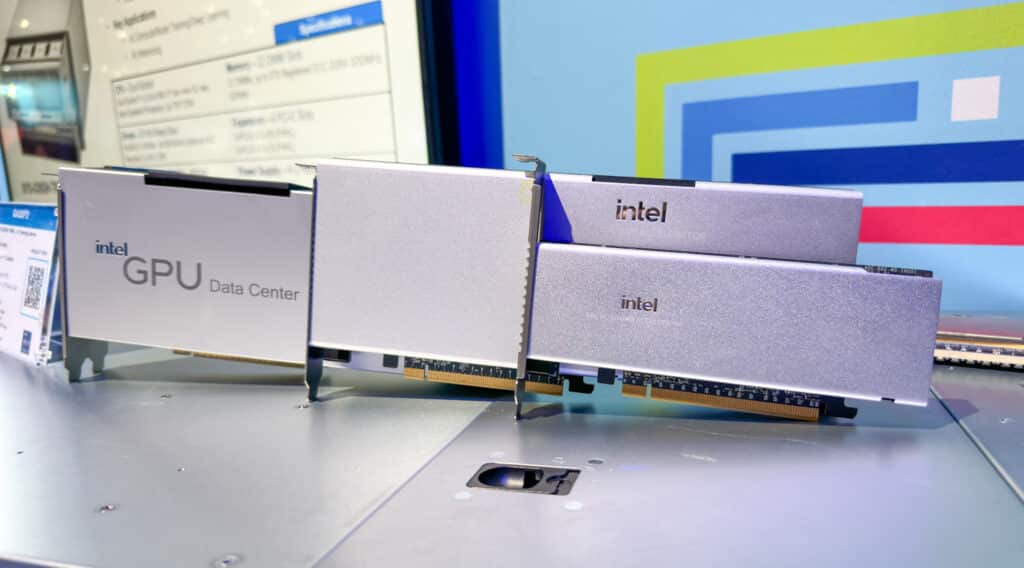
Although the major buzz at Intel Innovation 2023 was around Intel GPUs and their AI use cases, quite a few attendees were interested in VDI implementation and any implications.
Currently, there are two models of Intel Data Center Flex GPU, the 140 and 170, available today. The Flex 140 is a low-profile 75W GPU with two 8 Xe-core GPUs, while the 170 is a 150W GPU with a single 32 Xe-core GPU for higher peak performance.
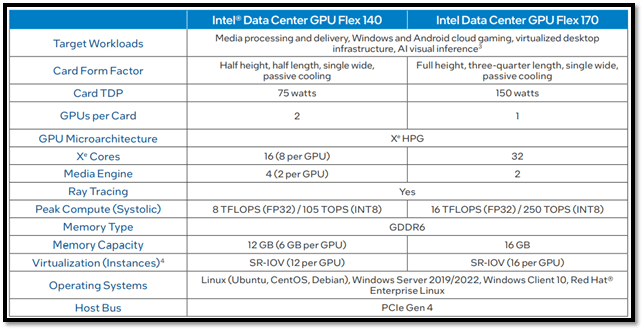
According to Intel, the new GPUs:
- Deliver five times the media transcode throughput at half the power compared to NVIDIA A10 on HEVC 1080p60.
- Can meet the industry’s one-second delay requirement while providing 8K 60 real-time transcode.
- Have twice the decode throughput at half the power of NVIDIA A10 across HEVC, AV1, AVC, and VP9.
- Support for up to eight simultaneous 4Kp60 streams or more than 30 simultaneous 1080p60 streams.
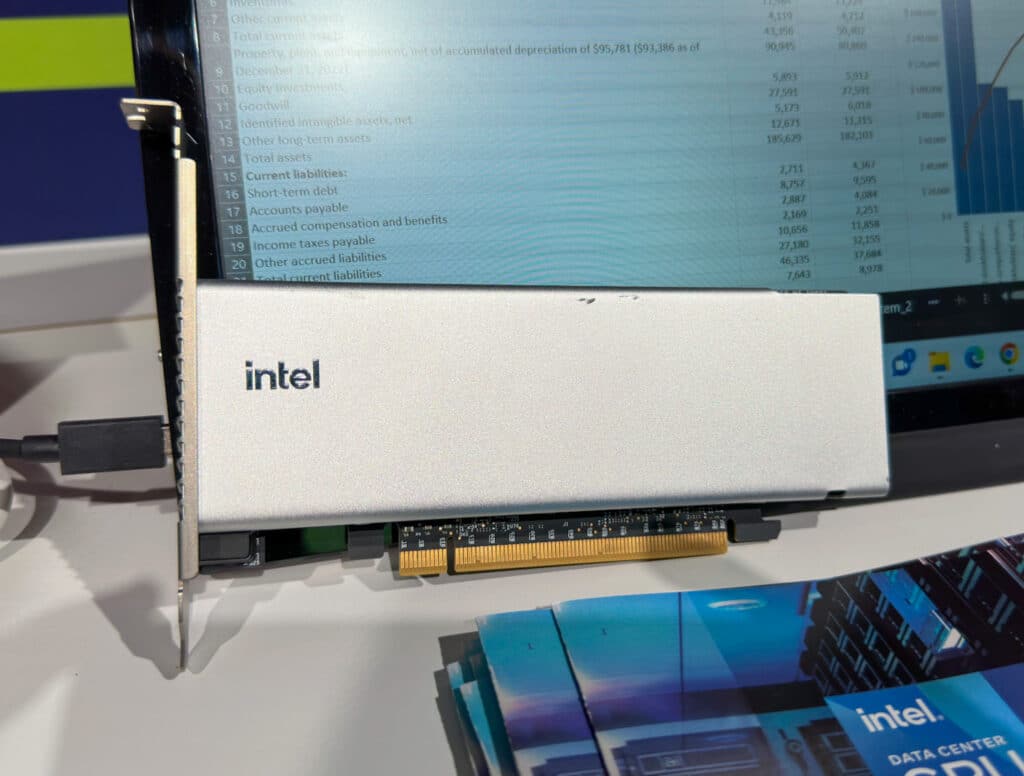
Another interesting feature of the Flex GPU is that it is the first GPU with a built-in AV1 encoder. AV1 is royalty-free and was created with the help of Google, Amazon, Apple, Intel, and other technology heavyweights. AV1 significantly improves compression efficiency over AVC and HEVC, resulting in more than a 30 percent bandwidth improvement.
In testing, Intel found that each Flex Series 140 GPU can support up to 12 VDI sessions per GPU and 16 per GPU for the 170 based on a typical knowledge worker with low-to-moderate graphics performance needs. Intel elaborated, explaining:
“From a VDI solution perspective, there is no artificial limitation imposed on virtual display per VDI session. This is solely determined by the capabilities of the VDI remoting agent and its usage of Intel oneAPI Video Processing Library (oneVPL). The maximum display resolution and number of concurrent displays that can be supported per VDI session depends on the availability of GPU local memory and encode capacity (i.e., GPU time slice).”
Less demanding users get higher guest density when Intel releases support for VMware Virtual Shared Graphics paravirtualization (vSGA).
Intel is aware of the pain users have with licensing GPUs in VDI implementations. The Flex VDI web page specifically states no licensing fees, flexible vGPU management, and flexible performance as key features of the Flex GPU.
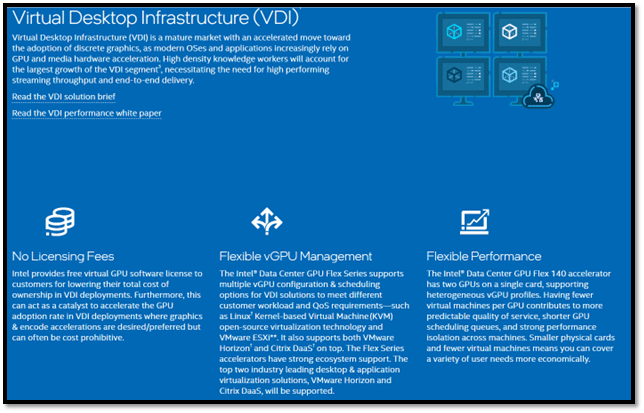
VMware and VMware users could not contain their excitement surrounding the new Flex GPUs. Arindam Nag, VP of Product Management, Horizon, VMware, explained that VMware was excited to expand its community of certified GPUs with the Intel Data Center GPU Flex Series and offer our customers more choice in GPU vendor selection.
Horizon expert Tristan Todd added that the innovation in licensing will simplify entitlement and positioning of GPU resources, making delivery a good user experience that is easier to own and operate.
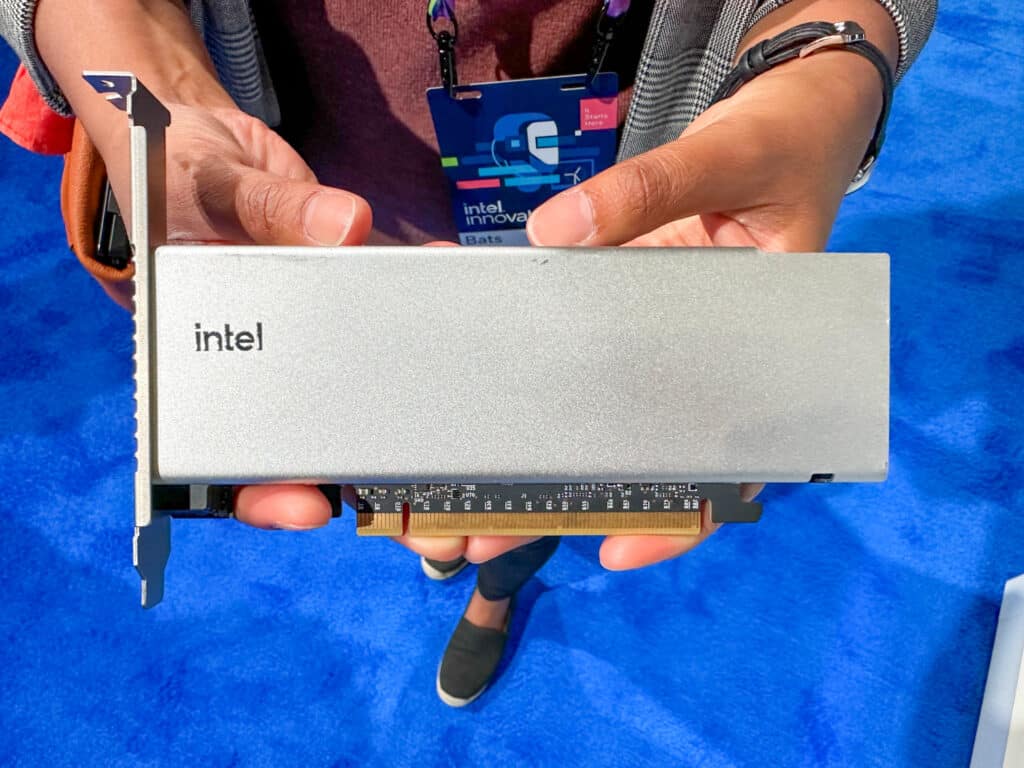
Stephen Wagner, VMware vExpert and VDI expert thought the change to licensing is a potential game-changer, and the Flex Series GPUs bring back true SR-IOV-based virtualization of GPU graphics without additional licensing costs. The consensus is the new GPUs and the elimination of licensing fees will drive innovation among other GPU vendors bringing an increase in competition and forcing more cost-effective solutions.
We are thrilled that Intel is introducing a new line of GPUs into the VDI market with a simple licensing model.




 Amazon
Amazon